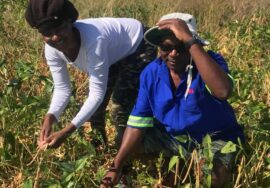
Scout Cowpeas Fields
Scouting cowpeas fields is an essential practice for farmers and agronomists to ensure healthy plant growth and maximum yield. Cowpeas, also known as black-eyed peas, are a versatile and nutritious crop that require careful monitoring throughout their growth cycle.
When scouting cowpeas fields, there are several key factors to consider. Firstly, inspect the plants for any signs of pests or diseases. Common pests that affect cowpeas include aphids, thrips, and pod borers. Look for chewed leaves, wilting, or discolored foliage, as these may indicate the presence of pests.
In addition to pests, diseases can also impact cowpeas. Common diseases include powdery mildew, bacterial blight, and root rot. Look for telltale signs such as white powdery patches, yellowing leaves, or stunted growth. Early detection of diseases allows for timely intervention, reducing the risk of crop loss.
Another important aspect of cowpeas field scouting is monitoring environmental conditions. Cowpeas thrive in warm and sunny climates, but excessive heat or drought can negatively impact their growth. Check soil moisture levels regularly and ensure proper irrigation. Additionally, assess the presence of weeds, as they can compete with cowpeas for nutrients and reduce yield.
Finally, it is crucial to assess the development stage of the cowpeas. This helps determine the appropriate timing for activities such as fertilization, weed control, and harvesting. Cowpeas typically take around 60-90 days to mature, depending on the variety.
In conclusion, scouting cowpeas fields is a vital practice to ensure optimal plant health and yield. By inspecting for pests, diseases, environmental conditions, and growth stages, farmers and agronomists can take proactive measures to protect their crops and maximize productivity.

